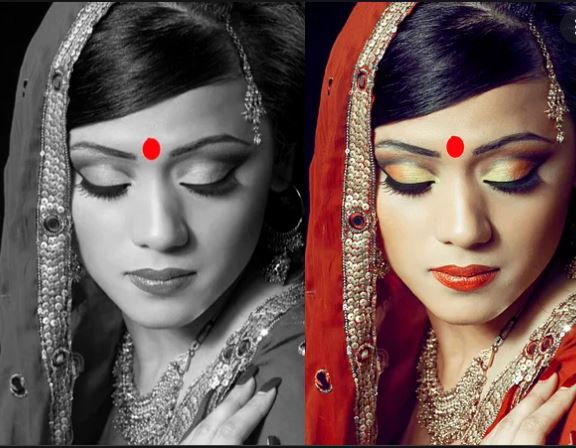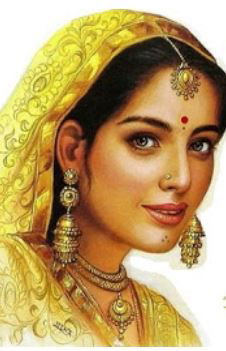World Bindi Day: “Identity, Intelligence, and Pride of Every Hindu Women”


One busy Sunday I walk to the grocery store Aldi, located in Northern Jersey, USA to purchase groceries. When I pulled my cart to the cashier for payment, to my surprise I found a young Black American woman sitting at the cashier desk wearing beautiful red and golden Bindi on her forehead. For the next couple of minutes while she was scanning the goods through a cash register, we talked about Hindu women’s culture, traditions, dresses especially beautiful sarees and Punjabi Salwar Kameez, the significance of Bindi on forehead and Heena on hands, and of course, the heavy gold jewelry which she has seen in some Bollywood blockbusters.
Hindu women around the world are always recognized by their 6-meter-long elegant sarees which they wear around the year. Though the Color, Pattern, and even fabric may vary as per the occasion, weather, and circumstances but sarees have always added beauty to these Hindu women.
So, it would be right to mention here that aside from the beautiful saris and gold jewelry that characterize many Hindu women on this globe, one of the most internationally-known body adornments worn by Hindu and even Jain, Sikh and some Muslim women is the “Bindi”, usually a red dot applied between the eyebrows on the forehead.

Hindu woman has used red dot called Bindi or Tilak for many millenniums. They generally use a smaller circular dot called “Bindi” rather than the larger mark called “Tilak” used by men.
In many instances, the term Bindi seems to be more used for beauty marks, but sometimes the term Sindoor, Kasturi, Kum-Kum is used as a reference to the material used to make the mark.
Conventionally it’s the Hindu married woman who wears Bindi. But this Mark can have several meanings and, in many traditions, even unmarried and little girls are seen wearing it on many occasions like festivals, marriage or even a birthday party.
Although “Bindi” can usually be described as a traditional red circular mark or dot which can vary from small to large, sometimes it is accompanied by a vermillion mark, additional “Tilaka”, on the parting of hair just above the forehead often called “Mang” and this marks serves to indicate her marital status.
Because of the many languages and dialects spoken throughout India, it is important to note that Binds is otherwise known by many other names.
Bindi is called “Tika” in Punjabi. Bindi is named “Pottu” in Tamil and Malayalam. In Hindi, Bindi is called “Tilak” and in Telugu, it is called “Bottu or Tilakam“. And in Bengal, people refer to Bindi as “Teep”.
However, the meaning behind the ornament, regardless of region or language, remains the same.
The term “Bindi” stems from the Sanskrit word “Bindu”, which means drop or particle.

Around 3000 BC, the Rishi-Muni (ancient seers of Hinduism) whose discoveries have made the world what it is today, had described the existence of areas of concentrated energy called the chakras from the Vedas.
There are seven main chakras that run along the center of the body, and the sixth one called the “Ajna Chakra”, “Brow Chakra” or “Third Eye Chakra” occurs exactly where Hindu women place their Bindi.
In Sanskrit, Ajna translates as “Command” or “Perceive,” and is considered the eye of intuition and intellect. According to the Vedas, when something is seen in the mind’s eye or in a dream, it is also seen by Ajna. Thus, the Bindi’s purpose is to enhance the powers of this chakra, specifically by facilitating one’s ability to access their inner wisdom or guru, allowing them to see the world and interpret things.
The other scientific theory which Vedas tell us is that “All people have a third inner eye. The two physical eyes are used for seeing the external world, while the third focuses inward toward God. As such, the red dot signifies piety as well as serving as a constant reminder to keep God at the center of one’s thoughts”.
So, Bindi is said to help women in a truthful, unbiased manner as well as forsake women of their ego and rid their false labels.
The Bindi, especially a red-colored one, also serves as an auspicious sign of marriage. As the Hindu bride steps over the threshold of her husband’s home, her red Bindi is believed to usher in prosperity and grant her a place as the family’s newest guardian. As such, when a woman is widowed, she no longer wears a red Bindi due to its association with marriage. So, she can wear a black or white or grey but there is no hard & fast rule to follow but solely depends on family traditions and her will.
In modern times, however, Bindi’s symbolism is no longer strictly adhered to and it is largely used as a beauty accessory or a part of women’s fashion

The purpose of wearing a Bindi can also very. If it covers the entire forehead in three horizontal lines, then it denotes that the wearer is an ascetic.
Sometimes, Bindi is used just for beautification purposes by females as it’s fashion. Even though traditionally Bindi is red colored but these days it can be worn in any color, shape, and size as per the new fashion trend. It has also been seen that these days some women have added small jewelry instead of a typical red dot.
The Bindi has also been worn as a beauty mark by many women with no adherence to Hindu belief. This evokes the question of cultural appropriation, as many Hollywood celebrities, to mention a few, Vanessa Hudgens, Gwen Stefani, Selena Gomez have begun wearing Bindi as a fashion statement. While some individuals with traditional Bindi-wearing cultures criticize this act, there are others who view it simply as an attempt to embrace Indian culture.
I think It would be right to say that “If you (Western Women) turn up to Coachella with a jeweled Bindi on your forehead along with a profound knowledge about the religious and cultural meaning behind this beautiful ornament, then go ahead and flaunt Hindu women most auspicious Jewel i.e., “Bindi”, But if you do not know the symbolism behind this or don’t care to learn about it, then there’s no reason for you to wear it“.
I would like to congratulate all Hindu Women on “World Bindi Day” with this Quote: –
“ BINDI IS A SIGN OF BHARAT’S RICH VEDIC CULTURE AND TRADITION WHICH IS REFLECTED WHEN YOU WEAR IT. BINDI ADORES YOUR’S INNER BEAUTY & INTELLIGENCE. BINDI NOT ONLY MAKES YOU MORE BEAUTIFUL BUT ALSO MAKE YOU REMEMBER THE IMMORTAL SOUL.“
DISCLAIMER: The author is solely responsible for the views expressed in this article. The author carries the responsibility for citing and/or licensing of images utilized within the text.
